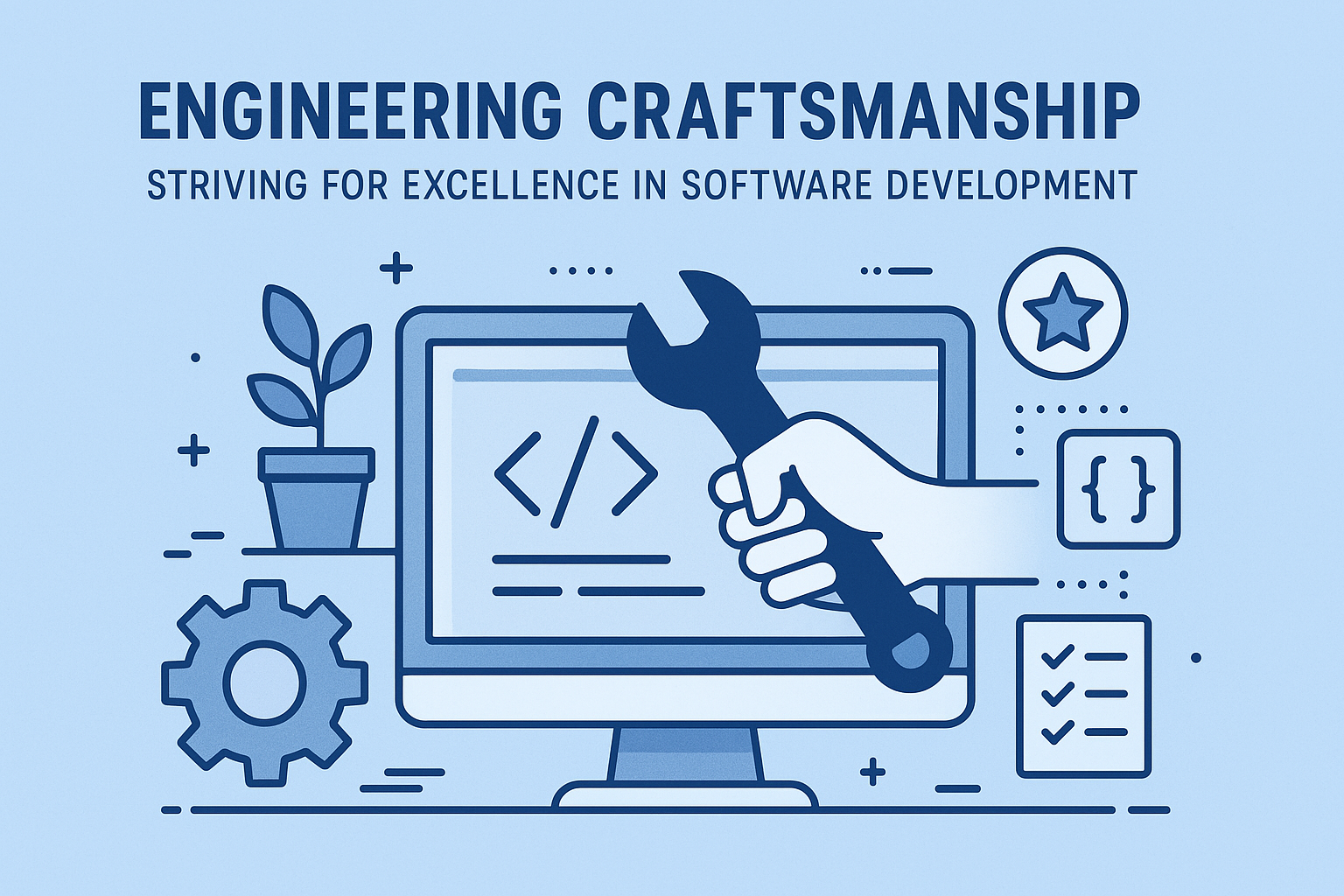Engineering Craftsmanship: Striving for Excellence in Software Development

Engineering Craftsmanship: Striving for Excellence in Software Development. It's a phrase that conjures up a sense of dedication, a commitment to building something of lasting value. In a world driven by rapid iteration and constant change, the pursuit of excellence can often feel like an elusive goal. Yet, it remains a cornerstone of high-performing engineering organisations. But how do we define, cultivate, and ultimately measure this elusive "excellence"?
The journey of software development has been a fascinating evolution. From the rigid, waterfall-driven methodologies of the past to the agile, iterative paradigms of today, each era has presented its own set of challenges and opportunities. The 1970s, with its slow, risk-averse approach, seems worlds apart from the continuous integration and delivery pipelines that enable teams to deploy code multiple times a day. But amidst these technological shifts, the fundamental question persists: how do we ensure that we're not just moving fast, but moving well?
Whilst the DORA metrics - Deployment Frequency, Lead Time for Changes, Change Failure Rate, and Mean Time to Recovery (MTTR) - offer valuable quantitative insights, they represent only a fraction of the picture. True engineering craftsmanship extends beyond mere metrics. It encompasses a culture of continuous learning, a commitment to quality, and a deep understanding of the user's needs.
Take, for example, the concept of "two-pizza teams," popularised by Amazon. It's not just about limiting team size; it's about fostering autonomy, enabling rapid decision-making, and promoting a sense of ownership. Similarly, Netflix's embrace of chaos engineering reflects a commitment to building resilient systems that can withstand the inevitable disruptions of real-world environments.
To cultivate engineering craftsmanship within your organisation, it's crucial to move beyond a purely metric-driven approach. Instead, focus on creating an environment that encourages:
- Continuous Learning: Foster a culture where engineers are encouraged to explore new technologies, experiment with different approaches, and learn from their mistakes.
- Quality as a Shared Responsibility: Emphasise that quality is not just the responsibility of QA teams, but a shared responsibility across the entire development lifecycle.
- User-Centricity: Prioritise understanding the user's needs and building software that delivers real value.
- Autonomy and Empowerment: Empower engineers to make decisions and take ownership of their work.
- Collaboration and Communication: Encourage open communication and collaboration across teams.
One of the most significant challenges in fostering engineering craftsmanship is overcoming the fear of measurement. Engineers may perceive metrics as punitive tools rather than instruments for improvement. To address this, leaders must position metrics as tools for self-reflection and team growth, emphasising their role in identifying areas for improvement and celebrating successes.
The future of engineering craftsmanship is likely to be shaped by AI-driven automation, predictive analytics, and a greater emphasis on developer experience. Imagine AI models proactively identifying potential code vulnerabilities or predictive analytics guiding architectural decisions based on real-time data.
As Gene Kim emphasises in The DevOps Handbook, engineering excellence is not just about speed, but about creating robust learning loops. We must shift our focus from measuring outputs to measuring outcomes - the impact our software has on users and the business.
Key Takeaways:
- True engineering craftsmanship extends beyond metrics; it encompasses a culture of continuous learning, quality, and user-centricity.
- Building high-trust, high-autonomy teams is crucial for fostering innovation and excellence.
- Leaders must position metrics as tools for improvement, not punishment.
- AI and automation are poised to play a significant role in shaping the future of engineering craftsmanship.
- Focus on outcomes, not just outputs.
Ultimately, engineering craftsmanship is about building software that not only functions flawlessly but also inspires and empowers users. It's about creating a legacy of excellence, one line of code at a time.
Engineering leader blending strategy, culture, and craft to build high-performing teams and future-ready platforms. I drive transformation through autonomy, continuous improvement, and data-driven excellence - creating environments where people thrive, innovation flourishes, and outcomes matter. Passionate about empowering others and reshaping engineering for impact at scale. Let’s build better, together.
